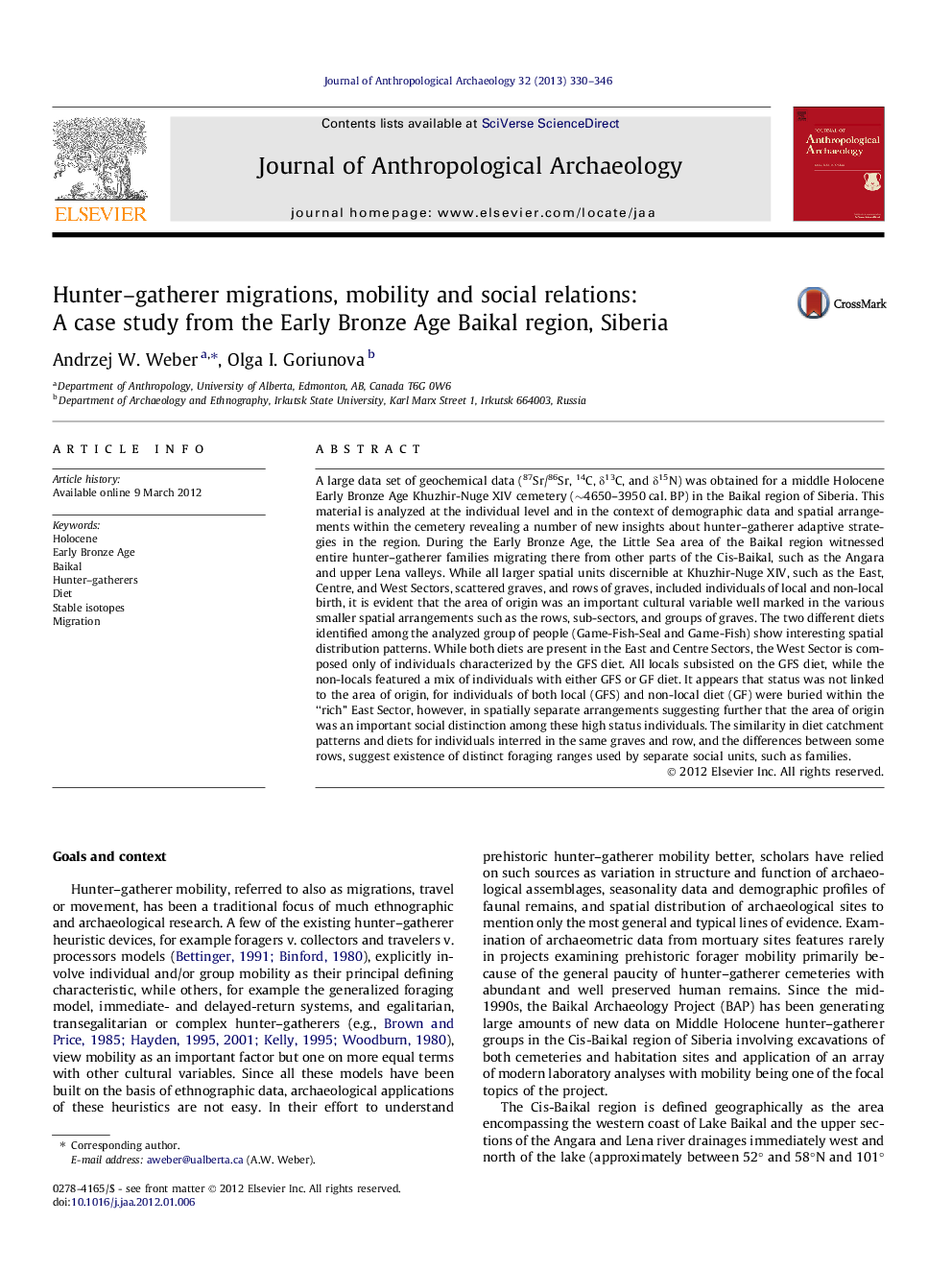| کد مقاله | کد نشریه | سال انتشار | مقاله انگلیسی | نسخه تمام متن |
|---|---|---|---|---|
| 1034948 | 943680 | 2013 | 17 صفحه PDF | دانلود رایگان |

A large data set of geochemical data (87Sr/86Sr, 14C, δ13C, and δ15N) was obtained for a middle Holocene Early Bronze Age Khuzhir-Nuge XIV cemetery (∼4650–3950 cal. BP) in the Baikal region of Siberia. This material is analyzed at the individual level and in the context of demographic data and spatial arrangements within the cemetery revealing a number of new insights about hunter–gatherer adaptive strategies in the region. During the Early Bronze Age, the Little Sea area of the Baikal region witnessed entire hunter–gatherer families migrating there from other parts of the Cis-Baikal, such as the Angara and upper Lena valleys. While all larger spatial units discernible at Khuzhir-Nuge XIV, such as the East, Centre, and West Sectors, scattered graves, and rows of graves, included individuals of local and non-local birth, it is evident that the area of origin was an important cultural variable well marked in the various smaller spatial arrangements such as the rows, sub-sectors, and groups of graves. The two different diets identified among the analyzed group of people (Game-Fish-Seal and Game-Fish) show interesting spatial distribution patterns. While both diets are present in the East and Centre Sectors, the West Sector is composed only of individuals characterized by the GFS diet. All locals subsisted on the GFS diet, while the non-locals featured a mix of individuals with either GFS or GF diet. It appears that status was not linked to the area of origin, for individuals of both local (GFS) and non-local diet (GF) were buried within the “rich” East Sector, however, in spatially separate arrangements suggesting further that the area of origin was an important social distinction among these high status individuals. The similarity in diet catchment patterns and diets for individuals interred in the same graves and row, and the differences between some rows, suggest existence of distinct foraging ranges used by separate social units, such as families.
► Individual life histories, travel, migrations, and marriage patterns.
► Human bioarchaeology, bone chemistry and geochemical tracers.
► Variability in diet and subsistence strategies.
► Variability in human behavior and cultural change.
Journal: Journal of Anthropological Archaeology - Volume 32, Issue 3, September 2013, Pages 330–346